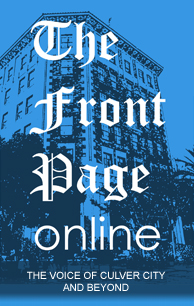By Stephen Schwartz
Re “Two School Board Members Worked on Bond. Three Did Not.”
I agree with Crystal Alexander’s statement, “It doesn’t take a union endorsement or a degree in education to make an effective School Board member. Being able to make good business decisions do.”
I want to thank the three School Board members who made a good business decision on July 1 by voting not to put the school bond on the November ballot as it was proposed at that time. Ms. Alexander states that the City Council was smart for putting the sales tax increase on the ballot. She is correct. They didn’t have a choice.
The state took away its cash cow when they were forced to disband the Redevelopment Agency. The Agency was able to sell revenue bonds without getting voter approval to finance programs such as police and fire protection, recreation services, street repair, and other infrastructure items.
The School District doesn’t have – and didn’t ever have – this ability. Since the implementation of the Serrano-Priest decision, the way local schools are funded changed. Now the state of California gives the School District a certain amount of money to spend per student, or as it is referred to ADA, Average Daily Attendance.
School districts can receive additional support from nonprofit groups, such as the Culver City Education Foundation and individual booster clubs, in addition to federal programs.
Back in June, I was fortunate to have been selected as one of the fewer than 500 likely- to-vote individuals to be polled by the District consultant hired to advise about the prospect of putting the bond on the November ballot. Five hundred likely voters is less than 2 percent of the registered residents in Culver City. It has been reported that more than 67 percent of the voters polled stated they would vote for a school bond. Sixty-seven percent of 500 likely voters is 335. This means that 33 percent, 165 likely voters, said either they weren’t sure if they would vote for a bond or would not vote for a bond.
I am wondering how many expressed a positive answer to the some of the other questions.
One question, paraphrased, was: “Would you trust the present School Board to spend the money wisely?” My answer was no.
Another was, “Would you vote for a bond if it included more money to expand the high school athletic field?” My answer was no.
A third question: “Would you vote for the bond if it included money to fix Robert Frost Auditorium?” My answer was yes.
There weren’t any questions about the refurbishing of the high school Natatorium. They did mention that if the bond issue passed, our taxes would go up an average of about $96 per property. They didn’t give any idea of the amount this bond was going to be. I have heard one Board member throw out the number $40 million. I heard a school Board candidate say $70 million. I also heard the District has done a needs assessment. The proposed cost of fixing the items on the list is in excess of $165 million.
At a recent candidate forum, someone mentioned that the School Board is thinking of not refurbishing the high school Natatorium, instead building a new home for Culver Park High School. No one has mentioned that we are still paying for the $40 million bond issue passed in 1995. It won’t be paid off until 2033.
My wife and have lived in our present home for 16 years. According to the County property tax bill, our home is assessed for around $313, 000. On our property tax bill, we pay $110 for the $40 million 1995 school bond and $96 for the School District parcel tax known as Measure EE.
I am one of the 67 percent who said I would probably vote for a school bond, but not until more information was available. That is why I am grateful to the three Board members who urged the District to wait until all the facts and figures are in before presenting a bond issue to the voters.
Mr. Schwartz, a former School Board member, may be contacted at ssschwar@pacbell.net
